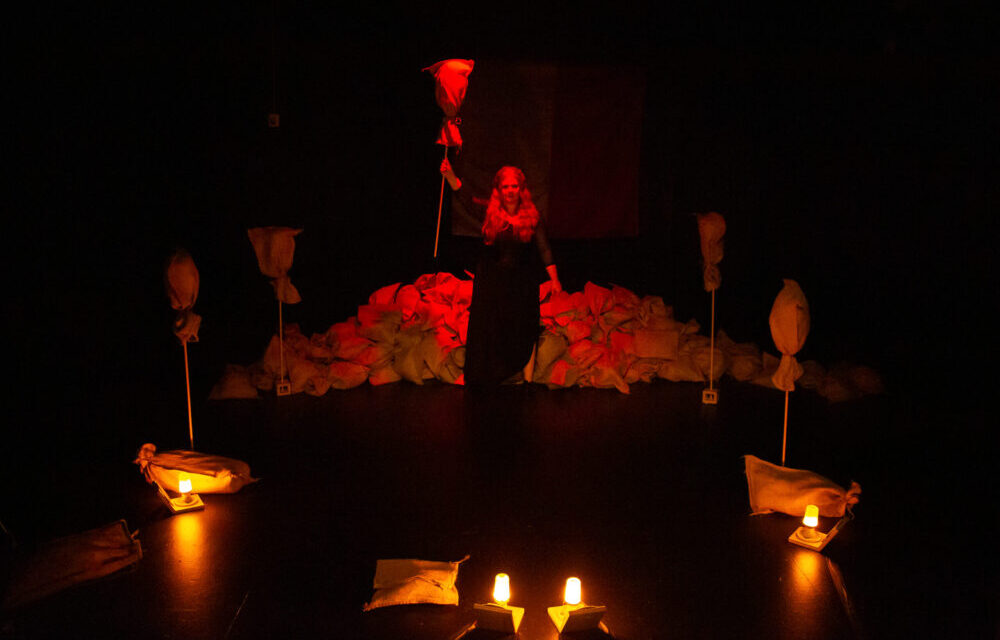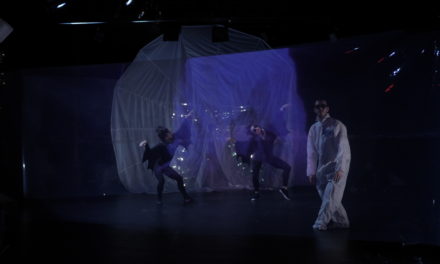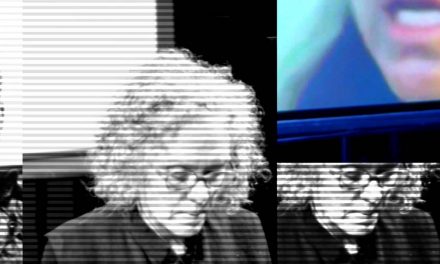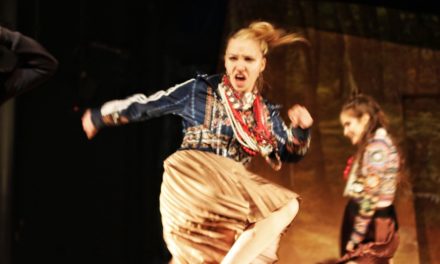The name “Tussaud” has always been linked to sensationalism and popular culture: now synonymous with the celebrity-studded wax “museums” known from London to Bangkok to Times Square, in the late eighteenth century the waxworks of Madame Marie Tussaud bore testament to the fervor, excess, and brutality sweeping through her native France. Ironically, it was her renderings of severed aristocratic heads–most notably that of executed Queen Marie Antoinette–that saved Tussaud from the fate of those she sculpted, her status as documentarian allowing her to survive the Reign of Terror, flee to England, and achieve worldwide fame for her creations. Now, in Jody Christopherson’s one-woman Tussaud/Antoinette, the fabled sculptor holds forth, revealing her loose-but-potent ties to Marie Antoinette and her complicated role as artist, historian, and witness to both sides of France’s conflict.
Performing in repertory, Christopherson and assistant director/sound designer Kodi Lynn Milburn jointly portray the piece’s two Maries, alternately playing Tussaud onstage and depicting memories of Antoinette via live voiceover (actress Jocelyn Kuritsky occasionally fills in for the latter role). Climbing over makeshift barricades and brandishing bagged heads-on-sticks, Christopherson brings us straight into the story of Marie Tussaud (née Grosholtz), a renowned wax sculptor caught in the political turmoil of Revolution-era France. Displaying from youth an uncanny talent for sculpting faces from memory, Tussaud began her artistic trade creating figures for her waxworker stepfather’s popular “salons.” The appeal of such exhibits not only helped her family weather the era’s shaky economy but rise within it, their wax dioramas of familiar socio-cultural scenes drawing attention from royalists and revolutionaries alike. When their depictions of the French court caught the eye of the queen’s dressmaker, an ensuing royal visit led to the monarchy enlisting Tussaud to teach sculpture to King Louis XVI’s sister.
Briefly stationed at Versailles, Tussaud found herself alternately enchanted and unsettled by the glamor and excess of court life, and just as conflicted over her acquaintanceship with the similarly admired-and-reviled Marie Antoinette. Returning to Paris amidst the birth of the National Assembly and rise of the Revolution, Tussaud and her family scrambled to adapt their exhibits to reflect public sentiment and erase all links to the now-maligned aristocracy. As political uprising turned to active bloodshed, the Revolution’s leaders tasked Tussaud to sculpt death masks from the heads of guillotined aristocrats–a duty upon which her own survival came to rest. Now, free from active threat but occupying a tenuous position as artist-to-the-regime, Tussaud straddles the need for reticence and the pull to speak truth about the events of which she was part.
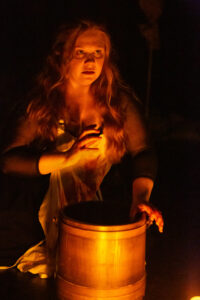
“Tussaud/Antoinette” pictured Jody Christopherson. Photo by Hunter Canning.
As Tussaud, Christopherson encompasses the conflict, conviction, and fear of all who live through turbulent times. Occupying polar worlds but unable to speak freely of either, she casts herself as witness and historian, but can never fully shed the subjectivity–and danger–of her role as an artist. Milburn’s haunting sound elements literally speak to this dichotomy, the Antoinette voiceovers echoing Tussaud’s guilt and complicity and revealing the queen’s parallel status as both outsider and fetish figure in her own nation.
The show’s final scene, set in the modern-day Times Square Tussaud’s, makes similar, if cheekier, points about the dangers of mob mentality and the role of artist-as-commentator. As Christopherson, clad in a pink “Tax The Rich” t-shirt, snaps selfies with invisible wax celebrities, a tour-guide voiceover summarizes Tussaud’s post-Revolutionary legacy and the metamorphosis of her work into the tourist attractions of today. A welcome palate cleanser after the show’s blood-steeped trajectory, this ending tableau slyly captures the class divisions, mass-cultural homogeneity, and love-hate views of celebrity that still hold sway over the stories we tell.
As Tussaud/Antoinette points out, to be an artist, or merely a perceptive human, is to have an opinion–and, in a damaged world, this precocity can just as easily make us doomed prophets or ruthless profiteers. As such, the piece confronts us with both our capacity for creation and push for survival, and challenges us to apply our skills toward serving the better parts of human nature. Though we, like both Maries, may be products of our time, we must remember that we can ultimately choose, and even change, our fate.
This post was written by the author in their personal capacity.The opinions expressed in this article are the author’s own and do not reflect the view of The Theatre Times, their staff or collaborators.
This post was written by Emily Cordes.
The views expressed here belong to the author and do not necessarily reflect our views and opinions.

